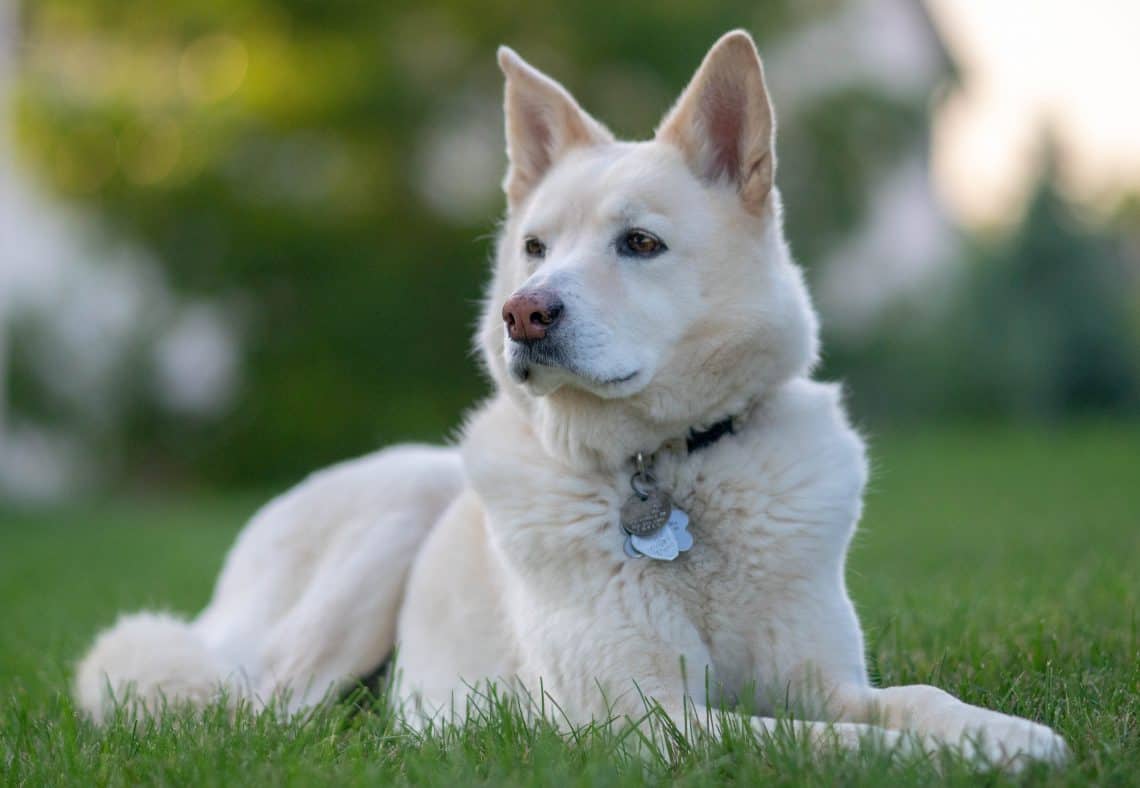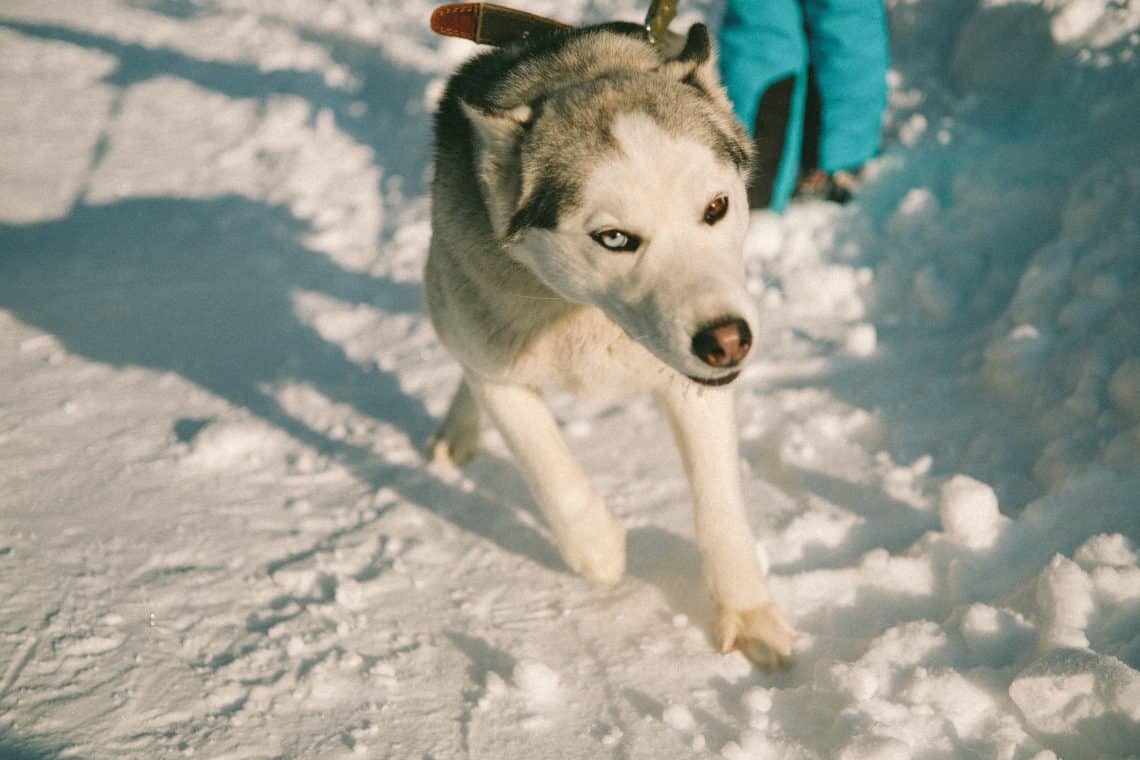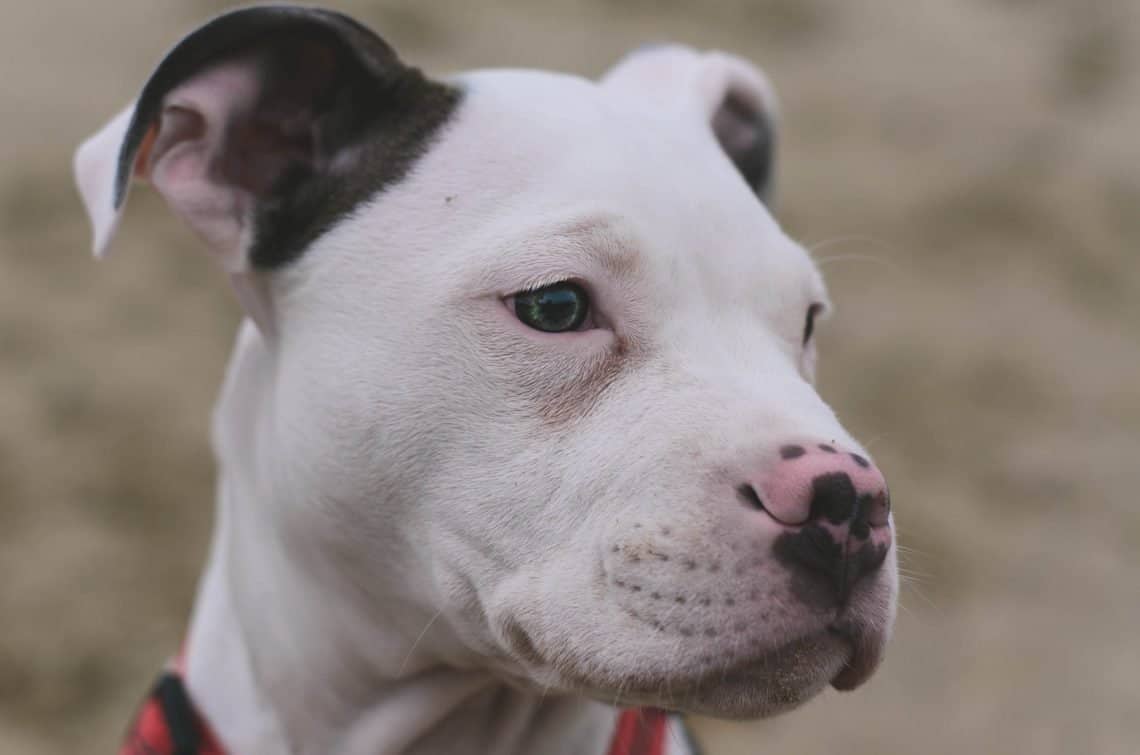How Will I Know if it Will Change
If your puppy has a splotchy nose that is pink and black, then it’s probable it will turn black within 8 to 12 weeks. If your puppy has a splotchy nose that is pink and liver color, then it’s probable they will end up with a liver color nose.
Only time will truly tell if their nose will change to black or not. Although not always, their nose most likely won’t remain splotchy and will change one way or another to become a complete color.
There are dogs that retain a splotchy nose color, however, which is called a Butterfly nose. These dogs are usually among the breeds in the first list in this post.
Why Do Dogs Have Pink Noses?
Dogs have pink noses due to melanin and nose color can turn pinkish due to weather or age. However, loss of pigmentation, sunburn, or infections can also turn the nose color lighter.
Dogs come in all shapes, sizes and color variations.
Most of them have been achieved through selective breeding or mutations that have been passed on over generations.
Some dogs are born with a black nose and others have matching snouts to their coat colors.
Nose color is generally regulated by the amount and distribution of melanin in a dog and can change with age and breed.
But why do they have pigmented noses?
Melanin is used to protect the nose from sunburn and skin cancer and we utilize its pigmentation to determine a dog’s true color.
Puppies may be born with a light or pink nose that darkens as they get older. This change in color could already happen by the age of 8-16 weeks or even one year.
Genetically red or liver dogs are being born with a liver nose that stays pink their whole lives.
If a liver puppy is born with a black nose, it’s a sign that the puppies from this particular bloodlines aren’t truly red and shouldn’t be sold as such.
Even dogs with pink noses can experience a slight color tone change over the years which is also affected by the amount of sun exposure.

Photo by Laula Co on Unsplash
Dog breeds with liver noses include the Field Spaniel, Pointer, English Springer, Cocker Spaniel, Dalmatian, Australian Shepherd, Siberian Husky, and Nova Scotia just to name the most common.
The liver gene is recessive, so it must have the genotype bb in order to be superficially present.
On the other hand, a BB or Bb dog (meaning either or both carry the dominant black gene) would have a normal black nose.
For a liver dog, it’s genetically impossible to develop a single black or grey hair.
Instead, liver will turn the coat brown, the eyes amber and the nose color will range from brown to pink.
Certain dog breeds like the Irish Setter may resemble a liver dog but are indeed just a recessive red with dark pigmentation.
On the contrary, liver dogs might not even be labeled as such as in the case of the “Chocolate” Lab.
The brown nose and yellow eyes are results of the liver gene and therefore they are liver dogs.
Dog breeds that can have liver/pink noses include:
In conclusion, a red, brown or even white-coated dog with amber eyes and a liver or pink nose is carrying this gene.
Sometimes the liver color might not be included in the breed standard so be careful when choosing your dog.
Genetics is a very interesting matter and can be highly interesting for any potential puppy buyer when it comes to temperament and behavior.

The dudley nose is the result of pigmentation loss due to illness or environmental influences which I will be talking more about below.
The usually black nose begins to turn pinkish in the middle, spreading outwards until almost the whole nose is covered.
Compared to the pink of a liver or butterfly nose, this color appears rather dull and always leaves a rest of dark pigmentation around the edges.
Pink noses in Bull Terriers are often referred to as dudley noses although the color mostly emerges from the white coat, not from a loss of pigmentation.
These breeds are prone to developing a dudley nose:

Photo by Azat Satlykov on Unsplash
Snow noses, also called “winter nose”, are similar to dudley noses with the big difference that they are not permanent.
During the winter months, the dog’s nose might turn pink and in spring it will switch back to its natural color.
Weather dependent color changes appear in the:
But don’t be fooled by the name winter nose, dogs that don’t live in cold temperatures can also develop this color change.
The cause of the snow nose is unbeknownst but treatment gladly isn’t required as the nasal color change is only a cosmetic issue.
Some suggest that the enzyme Tyrosinase (which is controlling the production of melanin) causes this phenomenon because it’s temperature-sensitive.

Photo by Lucas Ludwig on Unsplash
A butterfly nose is defined as randomly located patches of unpigmented (pink/liver) and black spots that resemble the wings of a butterfly.
This beautiful and unique looking nose is courtesy of these breeds:
Why Your Dog’s Nose Is Turning Pink
We dont entirely know why snow nose happens. It is a low priority for research because it is only a cosmetic change and does not impact the dogs health or comfort. Some theories state that changes in the length of daylight, temperature, or the enzyme tyrosinase may be involved in causing snow nose.

Credit: damedeeso / Getty
Eating and drinking from plastic bowls can sometimes cause changes in nose pigment, so if your dog with snow nose uses a plastic bowl, you can try switching to stainless steel or ceramic and see if the nose returns to and stays its normal color.
RELATED: 11 Best Slow Feeder Dog Bowls for Speed Eaters
Because we dont know what causes snow nose, there is no treatment. The lighter nose can be more sensitive to sun damage, so your dog may benefit from some dog-safe sunscreen applied to her nose when she is going to be out in the sun a lot.
Nancy Frensley | My dog’s nose is turning pink. What does this mean?
The color of a dogs nose will vary from dog to dog depending on the breed. It can be black, brown, liver, pink, or the same color as its coat. Sometimes a dogs nose can start off one color and change to another as it ages. Puppies are often born with pink noses, which later darken. What does it mean when a dogs nose loses its pigment turning pink or white? The reasons vary. De-pigmentation of the nose is sometimes harmless, but sometimes it is an indication that the dog needs medical attention. Contact your vet if you do not know why your dogs nose has lost its pigment.
Dogs with pink or white noses are prone to sunburn and precautions should be taken. You may need to apply sunscreen before letting the dog outside. In most cases a dog whoms nose has changed colors is not a cause for concern, however, sometimes it is. Be sure to contact your vet to make sure it is not due to a health related issue.
The Material contained herein may not be reproduced without the prior written approval of the author. Contents & Graphics Copyright © Dog Breed Info Center® (C) 1998- . All Rights Reserved. Our work is not Public Domain.